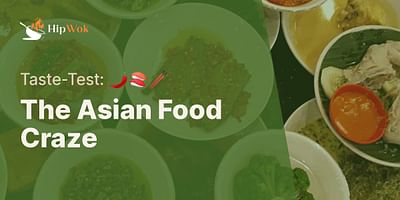Jasper Hahn is a seasoned food critic and culinary writer residing in the heart of London. His passion for Asian food was ignited during his exploratory trips across Southeast Asia. A keen enthusiast of wok cooking, Jasper loves to play with eclectic ingredients and unique flavors. His well-explained and easy-to-follow recipes are highly praised. Jasper's expertise lies in his ability to simplify complex recipes for his readers.
Asian cuisine is renowned for its incredible diversity, and there are several factors that contribute to this culinary richness. From the vastness of the continent to the historical and cultural influences, Asian cuisine offers a wide array of flavors, ingredients, and cooking techniques that make it truly unique.
One of the primary reasons for the diversity of Asian cuisine is the sheer size and geographical expanse of the continent. Asia is the largest continent in the world, encompassing a multitude of countries, each with its own distinct culinary traditions. From the spicy curries of India to the delicate sushi of Japan, the flavors and techniques vary greatly across the region.
Furthermore, Asia is home to a rich tapestry of cultures, languages, and religions, all of which have left their mark on the cuisine. The exchange of ideas and ingredients between different communities has led to the development of unique dishes and cooking styles. For example, the Indian influence on Malaysian cuisine has resulted in the fusion of spices and flavors, creating dishes like nasi lemak and roti canai.
Historical factors also play a significant role in shaping the diversity of Asian cuisine. Centuries of trade and colonization have introduced new ingredients and cooking techniques to different parts of Asia. The Silk Road, for instance, facilitated the exchange of goods and ideas between East and West, resulting in the blending of flavors and the creation of new dishes.
In addition, the agricultural practices and climate of each region have influenced the ingredients used in Asian cuisine. From the rice paddies of Southeast Asia to the tea plantations of China, the availability of local produce has shaped the flavors and cooking methods of each area. This connection to the land is deeply ingrained in Asian culinary traditions.
Asian cuisine also places a strong emphasis on balance and harmony, both in terms of flavors and nutrition. The concept of yin and yang, or the balance of opposing forces, is reflected in the use of contrasting flavors such as sweet and sour, spicy and mild. This attention to balance extends to the inclusion of a variety of ingredients, ensuring a well-rounded and nutritious meal.
Overall, the diversity of Asian cuisine is a result of the continent's vastness, cultural influences, historical factors, agricultural practices, and a commitment to balance and harmony. Exploring the flavors and techniques of Asian cooking is a journey that will take you through a myriad of tastes and traditions, offering a truly enriching culinary experience.
At Hip Wok, we celebrate the diversity of Asian cuisine by providing a comprehensive guide to wok cooking. Whether you're a seasoned chef or a beginner in the kitchen, our website offers valuable resources, including tips on choosing the best woks for Asian cuisine and how to season them for optimal performance. We also provide a wide range of delicious Asian recipes, showcasing the diversity and flavors of this incredible culinary tradition. So, grab your wok and join us on a flavorful adventure through the vibrant world of Asian cuisine!















